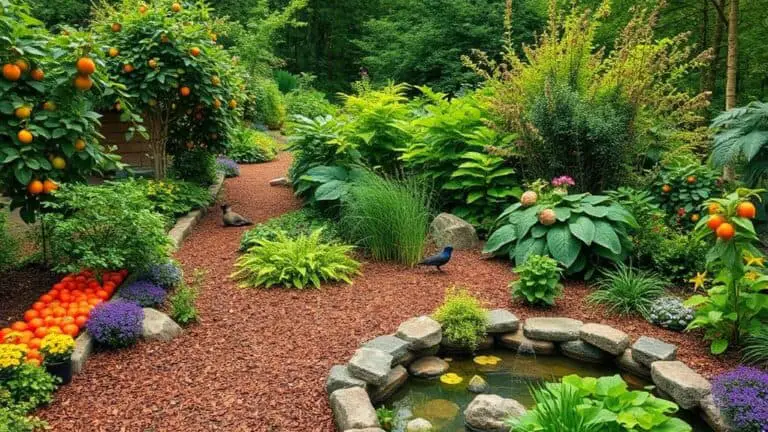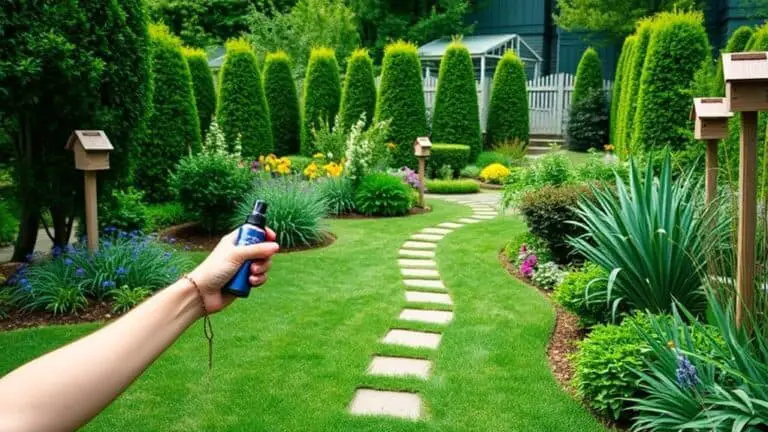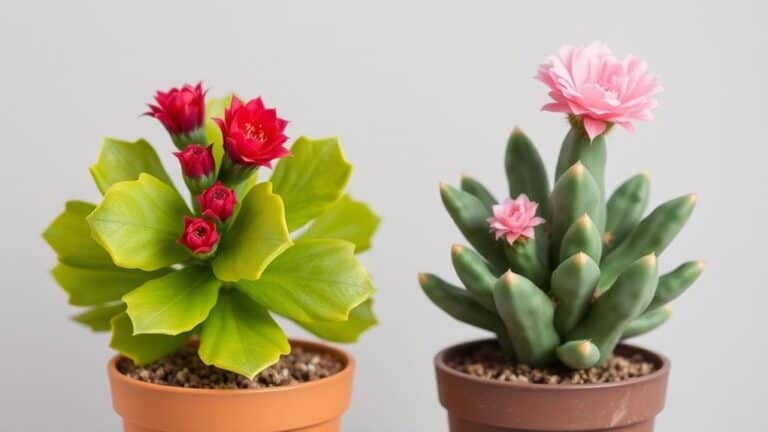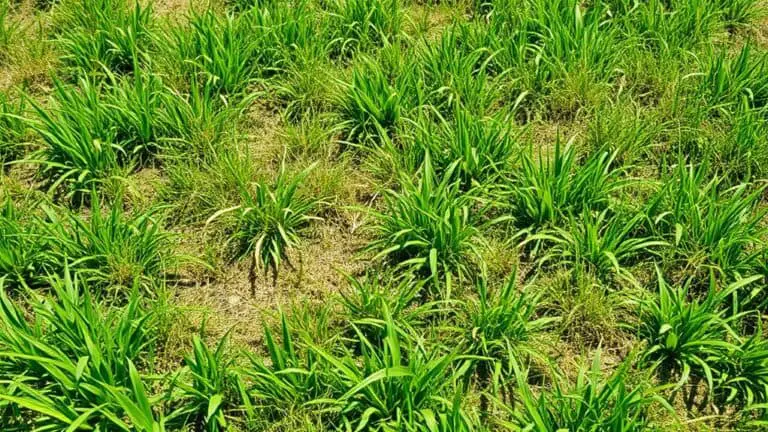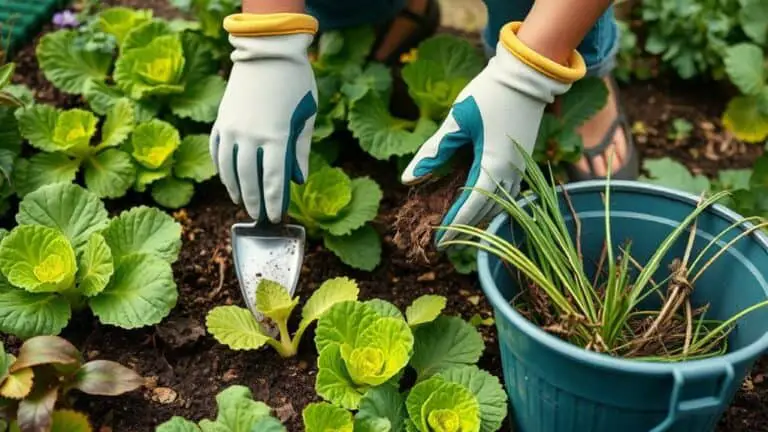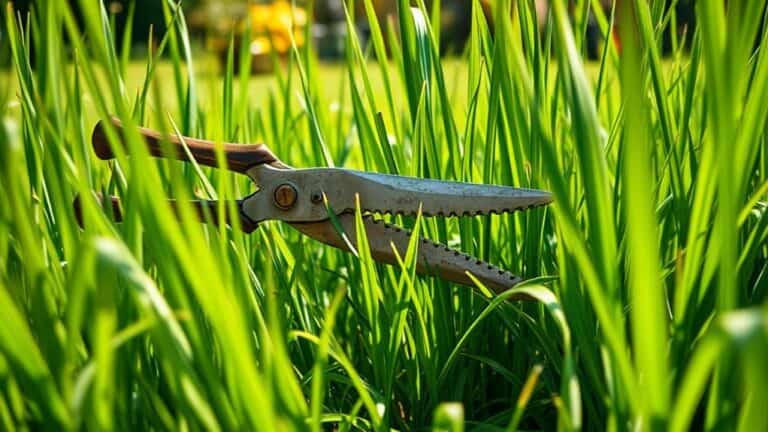Plants And Vegetables To Plant In Your Garden In August
As August rolls in, I've been thinking about what new plants and vegetables would thrive in my garden. This month presents a unique opportunity to focus on quick-growing crops like radishes and spinach, which can be harvested before the first frost. It's also the perfect time to reflect on root vegetables such as carrots and beets for a robust fall harvest. But before I start planting, there are essential soil preparation tips and watering strategies that need attention. Curious about the best ways to optimize your garden for August? Let's explore these together.
Timing for August Planting
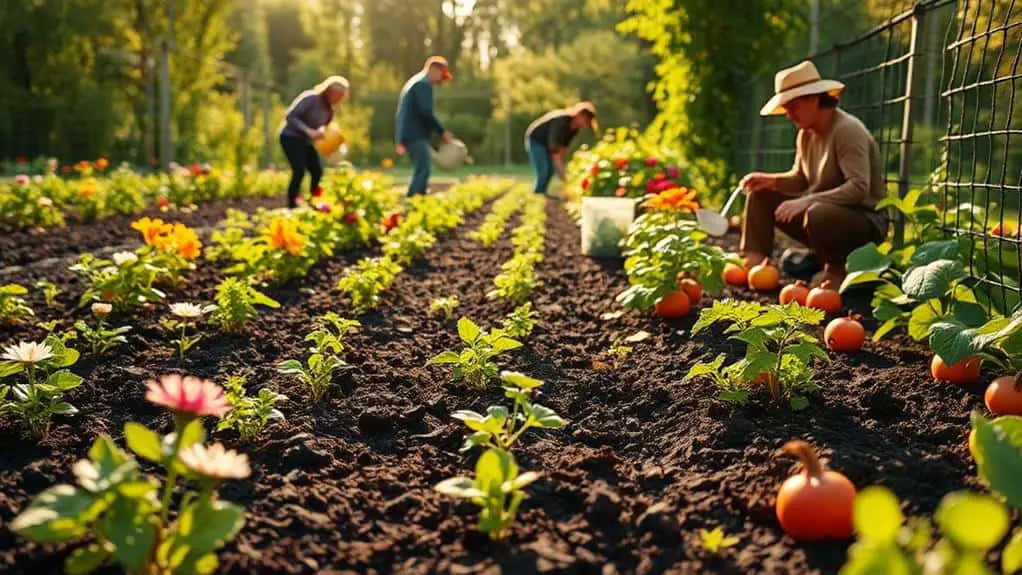
When it comes to timing for August planting, it's crucial to plan strategically to make the most of the second gardening season.
Start by knowing your area's first frost date, usually in late October. Count backwards to guarantee your fall planting has enough time to mature.
In August, focus on vegetables to plant like radishes, spinach, and kale. These crops grow quickly and thrive in cooler weather.
Confirm the soil is moist before planting seeds; this helps with germination and establishment.
Check your hardiness zone to choose the best vegetables for your area. By planning wisely, you can enjoy a bountiful fall harvest.
Soil Preparation Tips
Preparing your soil properly can make all the difference for a successful August planting. First, amend your soil with fresh compost or organic fertilizer. This step replenishes nutrient levels and improves soil structure.
Make certain to water the soil thoroughly a day or two before planting; this aids seed germination and root establishment. Check the soil pH and nutrient levels, aiming for a pH between 6.0 and 7.0.
Add organic matter like well-rotted manure or leaf mold. This enhances soil drainage and moisture retention, critical for new seeds and transplants.
Regularly turn and aerate the soil to improve texture and encourage beneficial microbes. These steps guarantee your plants have the best environment to thrive.
Spinach and Kale
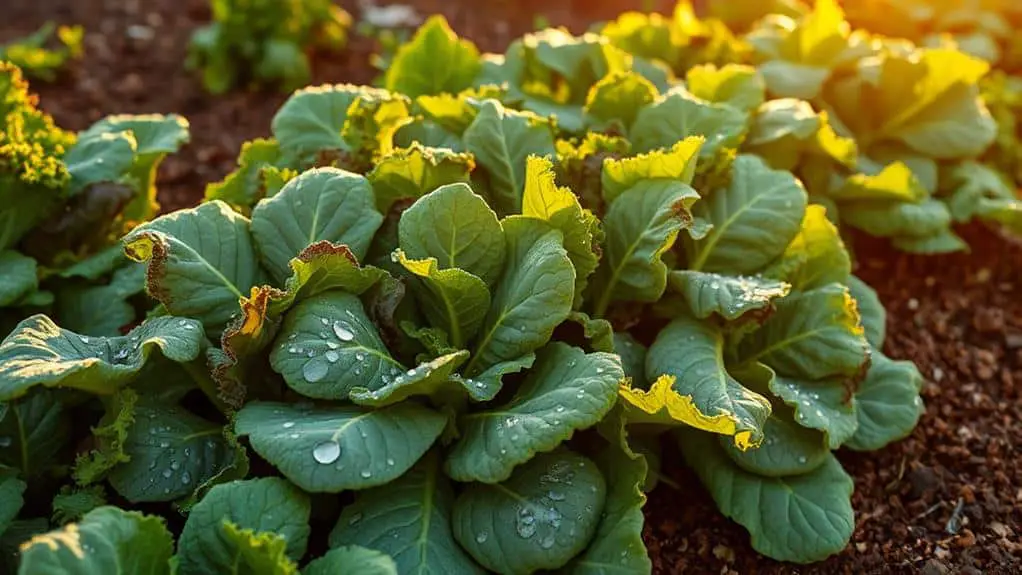
Planting spinach and kale in August has some fantastic benefits, especially for a fall harvest.
Spinach grows quickly in cooler temperatures and kale actually tastes better after a frost.
To get the best results, make sure your soil is rich with compost and keep it consistently moist for these nutrient-packed greens.
Benefits of Fall Planting
Fall planting offers a unique opportunity to grow cold-hardy greens like spinach and kale, which flourish in cooler temperatures.
Planting these nutrient-dense vegetables in August guarantees a bountiful fall harvest. Spinach matures in about 30-45 days, so you can enjoy multiple harvests if you plant in succession.
Kale can be harvested continuously by cutting the outer leaves, providing fresh greens well into late fall. Both spinach and kale can tolerate light frosts, which actually enhance their flavor and sweetness.
These leafy greens are packed with vitamins A, C, and K, and beneficial antioxidants, making them a healthy addition to your autumn meals.
Fall planting truly maximizes your garden's potential.
Optimal Growing Conditions
When planning to take full advantage of fall planting, it's important to understand the ideal growing conditions for spinach and kale to guarantee a successful harvest.
Spinach thrives in cool weather, with soil temperatures between 50°F to 70°F being perfect for planting. It can even handle light frost.
Kale, a hardy vegetable, also loves cool weather and its flavor gets sweeter after frost.
Both of these greens need well-drained, nutrient-rich soil, so adding compost to your garden space before planting is essential.
Spinach matures quickly, in about 30-40 days, while kale takes 55-75 days.
Don't forget to water regularly, especially during dry spells, to keep the soil moist and support healthy growth.
Happy gardening!
Radishes and Carrots
Radishes and carrots are fantastic choices for August planting, especially if you're looking to extend your garden's productivity into the cooler months.
Radishes mature quickly, often in just 21 days, making them perfect for late summer plantings. Carrots, particularly round varieties like Romeo, can be sown now for a fall harvest. Both crops thrive in cooler temperatures, and their flavors often improve after a light frost.
To get the best results:
- Consistently keep the soil moist, especially during dry spells.
- Direct-sow radishes as late as 6-8 weeks before the first expected frost.
- Plant carrots 10-12 weeks before frost for ideal growth.
Beets and Turnips
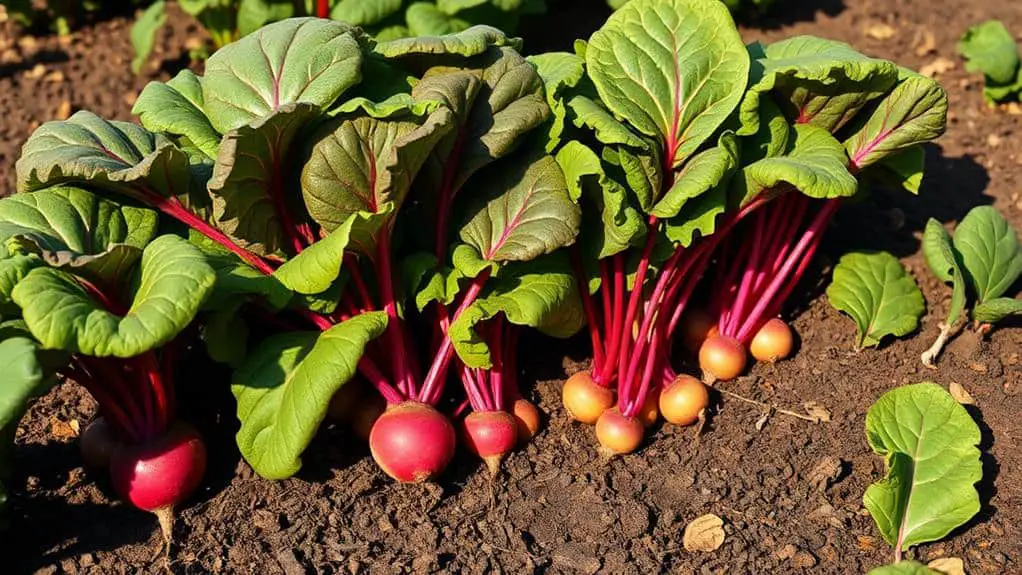
In addition to radishes and carrots, beets and turnips are excellent choices for August planting, ensuring your garden remains productive well into the cooler months.
Beets, like Chioggia and Detroit Dark Red, can be directly sown in the garden 8-12 weeks before the first frost. Turnips, especially the Silky Sweet variety, mature in about 60 days and offer both tasty roots and nutritious greens.
Both root vegetables thrive in cooler temperatures and their flavor improves after frost exposure, making them perfect for your fall garden.
To get started, sow seeds in well-prepared, composted soil and keep it consistently moist. You can sow seeds in succession throughout August for a continuous harvest into late fall and early winter.
Herbs for Fall
August is the perfect time to give your garden a boost with some versatile and resilient herbs for fall. Planting herbs in August guarantees a flavorful harvest as the weather cools.
Here are some excellent choices:
- Cilantro: Thrives in cooler temperatures and can be harvested multiple times throughout the fall.
- Parsley: A hardy herb that grows well into the colder months and withstands temperatures down to 10°F.
- Chives: A perennial herb that's easy to grow and offers fresh greens for harvesting multiple times.
These herbs not only enhance your fall dishes but also bring fresh, vibrant greens to your garden.
Don't wait—get planting this August for a bountiful fall harvest!
Flower Selections
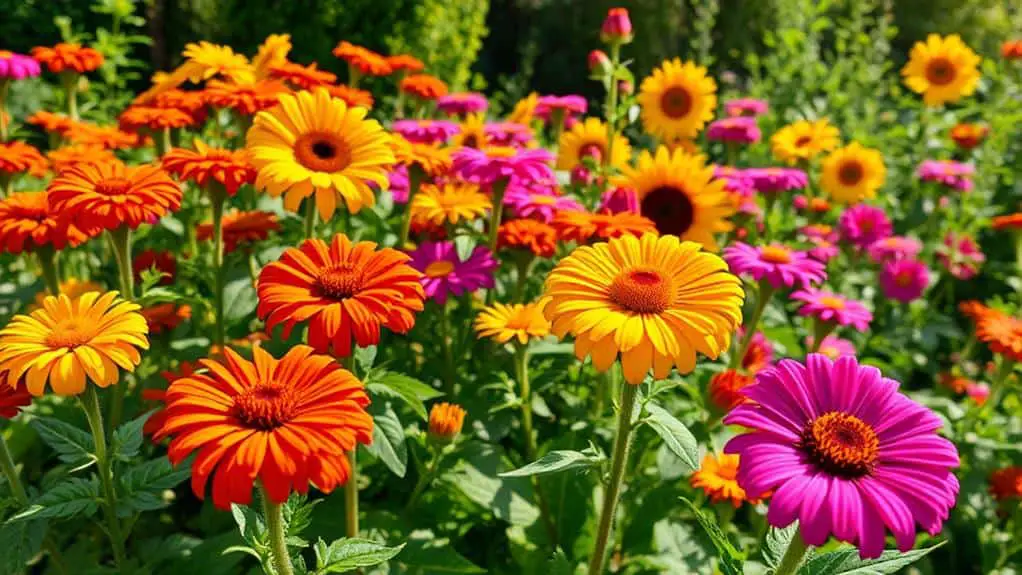
When planning your August garden, you'll find that flower selections can add a burst of color and vibrancy to your outdoor space.
In late summer, it's the perfect time to plant seeds for fall flowers. Consider pansies, which thrive in cooler temperatures and brighten gardens through fall.
Snapdragons can be sown now, offering varied colors that attract pollinators. Calendula is another hardy choice, blooming until frost and enhancing autumn gardens.
Asters, excellent late bloomers, support pollinator populations with their bright colors during fall.
Finally, chrysanthemums, or mums, are classic fall flowers that can be planted in August for a stunning seasonal display.
These selections will guarantee your garden remains lively and beautiful as the seasons change.
Watering and Mulching
Let's talk about watering and mulching to help your plants thrive this August.
Watering early in the morning guarantees your soil stays moist 6-8 inches deep, which is perfect for root growth, while preventing fungal diseases.
Adding 2 inches of organic mulch, like straw or wood chips, helps retain moisture and keeps weeds at bay, but be sure to leave young seedlings uncovered so they get enough sunlight.
Optimal Watering Schedule
Guaranteeing an ideal watering schedule is essential for maintaining a thriving garden in August.
Watering early in the morning guarantees foliage dries by night, reducing fungal risks and promoting healthy plant growth. Your vegetable garden needs about one inch of water weekly, which should penetrate the soil to a depth of 6-8 inches. This encourages deep root development, guaranteeing robust plants.
Before planting new seeds, make certain the soil is already moist. This helps with seed germination and strong establishment.
Here's a quick guide:
- Water early in the morning.
- Guarantee 1 inch of water per week.
- Keep the soil moist before planting seeds.
Following these tips will help your garden flourish. Happy gardening!
Benefits of Mulching
Mulching plays a crucial role in maintaining a healthy and productive garden, especially in August. By adding a 2-inch layer of organic mulch like straw or wood chips, I can help retain soil moisture by cutting down on evaporation. This is essential during the hot summer months.
Mulching also lowers soil temperature, creating a more favorable environment for root development and reducing plant stress. Plus, it acts as a natural weed suppressant, blocking sunlight and keeping weeds from sprouting.
As the mulch breaks down, it enriches the soil with nutrients and improves its structure. It also helps prevent soil erosion and protects roots from temperature fluctuations, promoting overall garden health and productivity.
Soil Moisture Maintenance
Maintaining soil moisture is key to a thriving garden, especially during the sweltering days of August. Watering early in the day is a good idea to prevent fungal diseases and guarantee deep soil moisture. Aim for about one inch of water weekly, and make certain it reaches 6-8 inches deep.
Consistent soil moisture is vital for seeds, so check the top inch of soil. If it's dry, it's time to water.
Mulching is essential in a summer garden. Organic mulch helps retain moisture and regulate temperature. Apply it to a depth of 2 inches but keep it away from young seedlings.
Here are some tips:
- Water early in the morning.
- Use a 2-inch layer of organic mulch.
- Check soil moisture by feeling the soil.
Weed and Pest Management
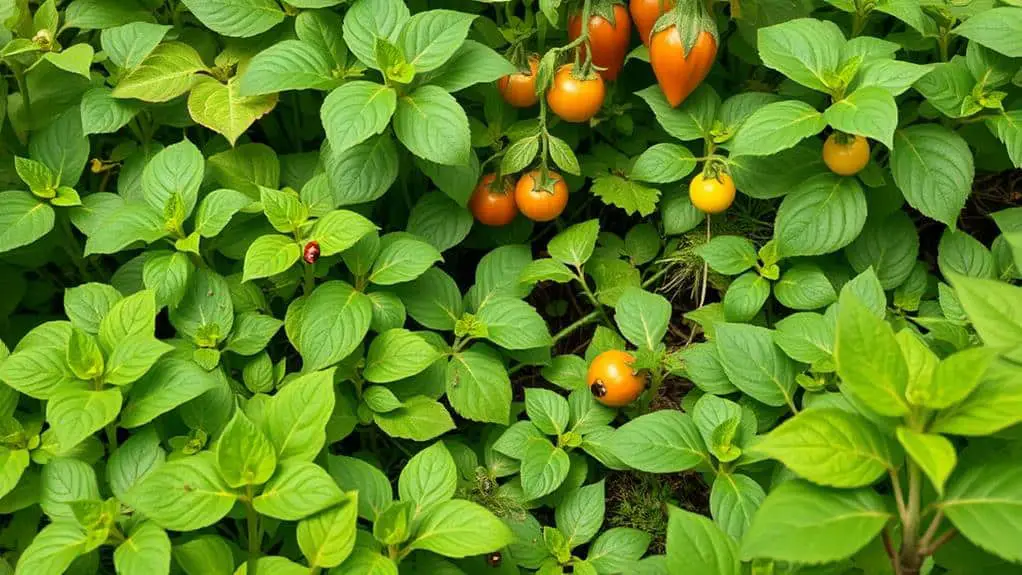
Weeds and pests can wreak havoc on your garden if left unchecked. Effective weed management is key to keeping your garden healthy. For example, red pigweed can produce up to 117,000 seeds, so being proactive is essential.
Regularly pulling weeds helps reduce the seed bank in your soil by 80-90% over a few years.
For pest control, companion planting is a great strategy. Some plants naturally repel harmful insects, promoting a diverse ecosystem that protects your fresh produce.
Don't forget to harvest regularly; overripe vegetables attract pests.
Using organic methods, like introducing beneficial insects and natural repellents, can minimize damage while keeping your garden safe.
Stay diligent, and your garden will thrive!
Harvesting Fall Crops
Harvesting fall crops is a rewarding experience that brings a bounty of fresh, flavorful produce to your table. Late summer sowing sets the stage for a successful harvest season.
For instance, turnips mature in about 60 days, offering versatility in size and culinary uses. Baby kale, which can be harvested multiple times, provides tender salad leaves well into November. Beets, with their edible roots and greens, can be picked from fall through winter.
Here are some tips to help you with harvesting fall crops:
- Turnips: Harvest at various sizes for different recipes.
- Kale: Pick baby leaves frequently for fresh salads.
- Beets: Enjoy both the roots and nutritious greens.
Frequently Asked Questions
What Vegetables Are Best to Plant in August?
When deciding what vegetables to plant in August, I recommend radishes, spinach, kale, beets, and turnips. Focus on soil preparation, crop rotation, pest management, and companion planting to guarantee a successful fall harvest.
Is It Too Late to Plant a Garden in August?
It's not too late to plant a garden in August! Seasonal planting requires proper garden preparation. Focus on soil health, pest control, and crop rotation. You'll enjoy a productive harvest with the right planning and care.
What Can You Plant in August for a Fall Garden?
You can plant fall crops like leafy greens, radishes, and beets in August. Use proper planting techniques, focus on soil preparation, and practice pest management. Seasonal gardening in August guarantees a bountiful fall harvest.
Can You Plant Outdoor Plants in August?
Yes, you can plant outdoor plants in August. Choose heat-tolerant plants for late summer gardening. Check your planting zones, prepare the soil with compost, and follow garden maintenance tips to guarantee healthy growth.
Conclusion
Gardening in August can be really rewarding. By focusing on quick-growing veggies like spinach, radishes, and kale, you'll enjoy fresh produce before the frost hits. Don't forget to keep an eye on soil moisture and nutrients for root veggies like carrots and beets. Herbs like cilantro and parsley will add great flavor to your fall dishes. With a bit of care in watering, mulching, and pest management, you'll be set for a successful and enjoyable gardening season. Happy planting!


